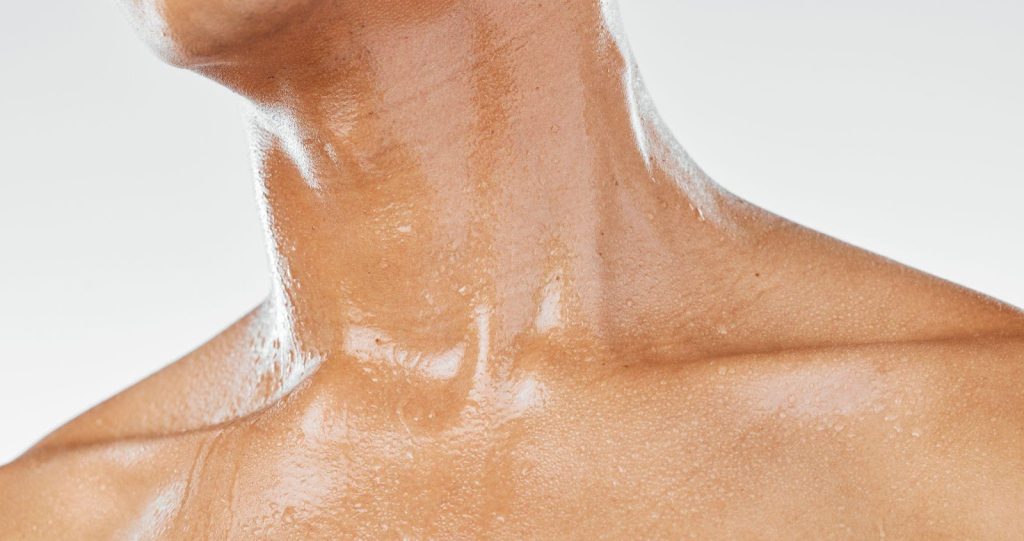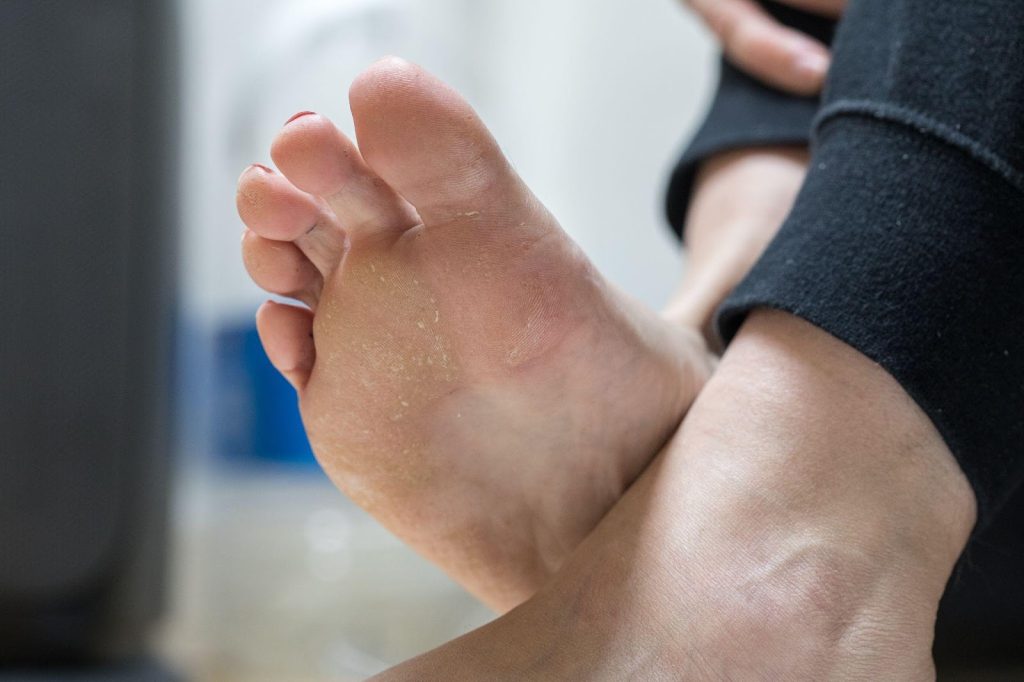What is excessive sweating (Hyperhidrosis)?
Excessive sweating, medically known as hyperhidrosis, is a medical condition characterised by excessive and uncontrollable sweating. This sweating can occur even when the body does not need cooling, such as in cool environments or during periods of inactivity.
Hyperhidrosis can be localised (focal), affecting specific areas like the underarms, palms, soles, and face, or generalised, affecting larger areas or the entire body. The condition can significantly impact daily activities and social interactions, leading to discomfort and embarrassment.

What causes excessive sweating?
The causes of hyperhidrosis can be divided into two main categories:
Primary hyperhidrosis
- Primary hyperhidrosis is idiopathic, meaning its exact cause is unknown.
- It is believed to be due to a malfunction in the nervous system that controls sweating.
- There is a strong genetic component, as it often runs in families.
- Typically, it starts in childhood or adolescence and persists throughout life.
- It commonly affects localised areas such as the palms, soles, underarms, and face.

Secondary hyperhidrosis
- It is caused by an underlying medical condition or a side effect of certain medications.
- Conditions that can lead to secondary hyperhidrosis include:
- Endocrine disorders (e.g., hyperthyroidism, diabetes)
- Infections (e.g., tuberculosis, HIV)
- Neurological disorders (e.g., Parkinson's disease, spinal cord injuries)
- Menopause or pregnancy
- Certain medications, such as antidepressants or antibiotics, can also cause excessive sweating.
- Secondary hyperhidrosis can affect larger areas or the whole body and typically starts in adulthood.
What are the symptoms of excessive sweating?
The primary symptom of hyperhidrosis is excessive sweating, which can present in various ways:
- Visible and excessive sweating that occurs even when the person is at rest and in a cool environment
- Interference with daily activities such as difficulty holding or gripping objects due to slippery hands, trouble writing or using electronic devices, and frequent need to change clothing or bathe
- Excessive sweating brought on by specific triggers e.g. hot weather, physical activity, caffeine
- Skin maceration and peeling (softening and breaking down of skin)
- Body odour
- Fungal infections
- Development of rashes or skin irritation
- Anxiety and self-consciousness about sweating

How is excessive sweating diagnosed?
The diagnosis of hyperhidrosis involves several steps:
- Medical history: a detailed medical history by a doctor or specialist (link to Doctor page) helps identify patterns and possible triggers of excessive sweating. They may ask questions about the onset, frequency, and areas affected by sweating.
- Physical examination: a physical exam focuses on the areas where sweating is most prevalent. The doctor will look for signs of moisture, skin maceration, or infections.
- Blood tests: blood tests may be conducted to rule out underlying conditions, such as thyroid disorders or infections, that can cause secondary hyperhidrosis.
What are the treatment options for excessive sweating in Singapore?
Several treatment options are available to manage hyperhidrosis:
- Topical treatments: antiperspirants containing aluminium chloride can reduce sweating by blocking sweat ducts.
- Botulinum toxin injections: Botulinum toxin temporarily blocks the nerve signalss that trigger sweat glands and are typically effective for 4 to 6 months.
- Lifestyle adjustments: wear breathable, loose-fitting clothing, use absorbent pads or sweat shields, and manage stress through relaxation techniques or therapy.

Frequently asked questions
Is hyperhidrosis common in children?
Yes, primary hyperhidrosis, often starts in childhood or adolescence.
How quickly do treatments start working?
Some treatments, such as antiperspirants and Botox, can show results within a few days to 2 weeks.
How often do I need Botox injections for sweating?
Botox injections typically need to be repeated every 4 to 6 months to maintain their effectiveness.

